For decades, the logic of retirement saving has been simple: defer taxes today, worry about them tomorrow. But beginning in 2026, that calculation changes for a very specific group of Americans — workers over 50 earning more than $150,000 a year.
Imagine Susan, a 55-year-old doctor. She’s always maxed out her 401(k), relying on the additional “catch-up” contributions to tuck away a little more each year on a pre-tax basis. She liked the ritual: bigger contributions meant smaller taxable income; a win she could see every year at tax time. But come 2026, Susan will no longer have that option. Her catch-up dollars won’t reduce her tax bill. Instead, they’ll be deducted from her pay on an after-tax basis, tax-free later.
This change, born out of the SECURE 2.0 Act, reflects a broader shift in how Congress envisions retirement saving. It is less about giving high earners another deduction and more about nudging them toward building tax-free wealth for the future.
What’s Actually Changing
The rule is straightforward on paper: if your W2 wages exceeded $150,000 in 2025 and you’re age 50 or older, every dollar of your catch-up contribution must go into the plan as a Roth contribution. For someone like Susan, that means her extra $8,000 contribution in 2026 won’t shrink her taxable income — but it will grow tax-free until she retires.
For workers between ages 60 and 63, the story grows more interesting. A new “super catch-up” allows them to contribute even more — $11,250 which will remain the same in 2026. But again, for those above the income threshold, those dollars will be Roth moving forward in 2026.
The Personal Impact
The shift may feel jarring at first. After all, the appeal of pre-tax saving has always been immediate: less taxable income today. Roth, by contrast, asks you to think about the future, to imagine yourself drawing down your account years from now without worrying about the IRS.
For some, like Susan, this could be an unexpected blessing. Many high earners expect to maintain — or even increase — their standard of living in retirement. Tax-free withdrawals offer flexibility, especially when paired with Social Security or other taxable income sources. In fact, the Roth requirement may force people into a healthier balance between pre-tax and after-tax savings.
But the transition won’t be seamless. Employees may notice a dip in take-home pay once those Roth contributions begin. And not every plan is ready: employers without a Roth option must update their plans, or their employees will lose access to catch-up contributions altogether.
For Employers and Plan Sponsors
The rule is as much about administration as it is about individual finance. For companies that sponsor retirement plans — especially those we work with directly — 2026 will require careful preparation. Payroll systems need adjustments, plan documents may need amending, and employees will need education to understand why their paycheck looks different.
Finding the Opportunity
If the law feels like another restriction, it’s worth reframing the story. This isn’t just about taking away a tax break. It’s about opening the door to more tax-free retirement income, something financial planners have long encouraged clients to consider. Having both pre-tax and Roth accounts — two different “tax buckets” — provides flexibility in retirement that can soften the blow of unexpected expenses or tax law changes down the road.
For individuals, it may be the nudge they needed to start thinking differently about their retirement strategy.
The Bottom Line
The mandatory Roth catch-up contribution isn’t just another rule buried in the fine print of SECURE 2.0. It’s a turning point in how we think about retirement savings for high earners.
Susan may grumble when her tax refund looks smaller in 2026. But ten years from now, when she’s retired and drawing from a Roth account that’s grown untouched by the IRS, she may look back on this change as one of the best things for her retirement savings.
What this means for you: Whether you’re saving through your employer’s plan or managing one for your employees, these changes could reshape how retirement dollars are contributed, taxed, and ultimately withdrawn. We’re here to help you navigate the transition — from evaluating your personal strategy to ensuring employer-sponsored plans are fully compliant and employee-ready.
Reach out to our team today to discuss how these new rules may affect your retirement plan — and how to take advantage of them.
RTD Financial Advisors, Inc (“RTD”) is a SEC registered investment adviser. Information presented is for educational purposes only intended for a broad audience. The information does not intend to make an offer or solicitation for the sale or purchase of any specific securities, investments, or investment strategies. Investments involve risk and are not guaranteed. RTD has reasonable belief that this marketing does not include any false or material misleading statements or omissions of facts regarding services, investment, or client experience. RTD has reasonable belief that the content as a whole will not cause an untrue or misleading implication regarding the adviser’s services, investments, or client experiences. RTD has presented information in a fair and balanced manner. RTD is not giving tax, legal or accounting advice, consult a professional tax or legal representative if needed.
